Hellcat Send-Off: Driving all five, killing all tires
This article first appeared in Hagerty Drivers Club magazine. Click here to subscribe and join the club.
The Challenger SRT Hellcat, the exalted firstborn, will cease production at the end of 2023. So will its four-door sibling, the Charger Hellcat. R.I.P. wishes already go to the Jeep Grand Cherokee Trackhawk, gone since 2021. In a few short seasons, we will be left with only the Ram 1500 TRX pickup and the Dodge Durango SRT Hellcat.
None of those machines have met the world with fewer than eight cylinders, 6.2 liters, or 700 horsepower. That would not be the Hellcat way.
This story ran in the magazine with a companion piece—Top 10 Hellcat Engine Facts You Need to Know! Click here to read it. —Ed.
The name launched in late 2014. It came attached to a two-door Dodge—that Challenger—and an evolution of the modern (2015 to present) Chrysler Hemi V-8.
Dodge reps thought they had built and engineered a supercharged, 707-hp 6.2-liter to spice up a popular but aging platform. What they really did was churn out a high-octane swan song for big V-8s in general. An impressive and mannered engine built not of new ideas or outlandish tech but love for big noise, fat tires, and attainable V-8 insanity.
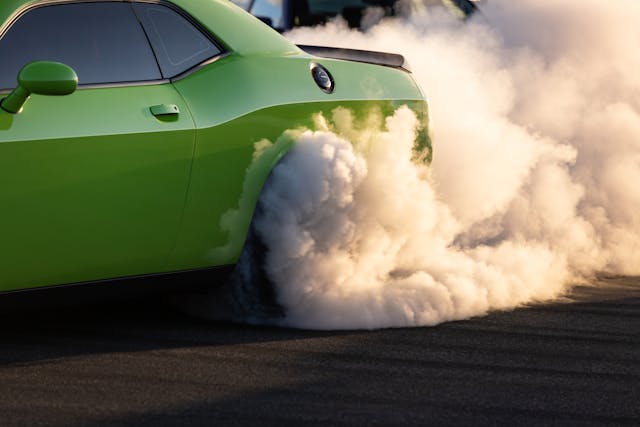
The public went nuts. Sales surprised everybody. More important, that V-8 became a household name. Stellantis, Dodge’s parent company, took the bit and ran. At one point, it seemed like that 6.2 had been shoehorned into everything the company made—a Jeep SUV, a family-wagon Dodge, a pickup, a zillion flavors of Challenger and Charger.
Naturally, we were fine with that.
Stellantis recently announced its product plans for the rest of the decade. The menu includes decreased carbon emissions and more electric power but also a production rampdown for a certain engine. The Ram TRX and Durango Hellcats do not yet have expiry dates, but the rest of the lineup is either dead or marked for slaughter.
Duly informed, we gathered one of each platform for a proper see-off of the Hell-engine. Five vehicles in all.
Call it a … Hellebration.

A Parting Note: Stellantis kindly loaned us a new Charger for this story. In early discussions, PR representatives balked when we referred to certain non-Dodge engines as “Hellcats.” If it’s not in a Dodge, they said, the word doesn’t apply—those engines are simply “the supercharged six-point-two.”
Technically correct. But ask the people—the lot rats at your local cruise night, the staff of your local hot-rod shop, or most of hip-hop: Nobody talks like that. It’s “the Jeep with the Hellcat motor,” “the Ram with the Hellcat motor.” (At a gas station, I once heard someone say, “That’s the Hellcat with that Hellcat motor!”)
The world will remember that 6.2 by the H-word. So that’s what we’ll call it here.
This is one of the greatest engines ever built. It is a love letter to the traveling flame front, a piece of American myth, internal-combustion royalty in a business increasingly filled with four-pot peasants. Plus a reminder, amid a rising tide of 1000-hp EVs, why power is, with a great car, never the whole story.
Sound hyperbolic? Go drive one.
Reign long, you king. It’s like the man said in Star Wars: They can kill you, sure. It’ll only make you stronger.
***
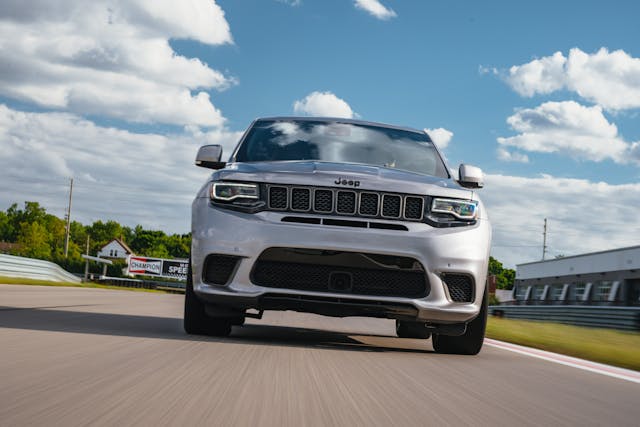
Jeep Grand Cherokee Trackhawk: The trail cannon
They put it in a Jeep. Why? Why, too, did they name that Jeep “Trackhawk” and prep it for hard lapping on a road course when the Jeep brand was built on off-road capability? And when most track-day organizations won’t let you run an SUV for safety reasons anyway?
Sometimes, as Freud did not say, a hot dog is just a hot dog. And a 707-hp Grand Cherokee apex hooligan is just that. Existential questions are beside the point.
It wears the Hell-family aesthetic: fat cooling intakes up front, Brembo calipers the size of anvils, 20-inch wheels. Ironically, what the Trackhawk lacks in Why, it makes up for in cohesion. This platform wasn’t designed to see 700 horsepower, but you wouldn’t know that to drive it.
This is the most nimble of the four-wheel-drivers here. The Durango and TRX have more logical excuses for that power—more cargo space and towing capacity—but they’re also heavier and longer, and they don’t turn or stop as well. That steering rack is slowly geared and subdued in feedback, but it also feels clear and adult. Those other rigs need more space to move on public asphalt, are more work to manage on a back road.

Stoplight launches, in particular, are less nuclear and violent. Credit partly the Trackhawk’s 114-inch wheelbase, the shortest in the Hellcat family. (Only the Challenger comes close, at 116 inches.) Launch control makes you think the rear bumper is inches from touching the pavement.
When you have a Hell-Jeep hammer, every corner, straight, and stoplight is a nail. There are faster SUVs, and lighter and quicker ones, and track-ready examples with more prestigious badges. Meet this hulking Grand Cherokee after a crummy day at work, though—this all-weather, trail-friendly weapon, easy to park but feeling as dense and substantial as a dark star—and you’ll forget, without trying, that they even exist.
Specs: Jeep Grand Cherokee Trackhawk
Model years: 2018–2021 (2018 model shown)
Output: 707 hp, 645 lb-ft
Weight: 5258 lb
0-60 mph: 3.5 sec
MSRP: $86,995 (2021 model year)
***
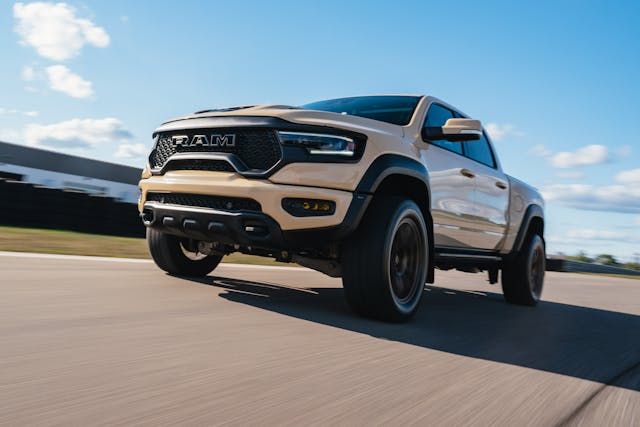
Ram 1500 TRX: To eat the raw meat
Hellcat V-8s do not get bolted into chipper-looking vehicles. The Jeep Trackhawk, the most physically compact of clan Hell, is still a meaty, ominous, glowering device, seemingly carved from a mad billet of Car.
The TRX is the exception. It looks like a big, friendly dog. A Labrador retriever, maybe, or a doofy golden. Like every dog, it greets you with capital letters: HEY BUDDY HI HELLO CAN WE PLAY I WANT TREATS DO YOU HAVE TREATS?!?
Treats, of course, being loud pedal.
Trucks have traditionally been reasonable places to put massive power and torque; by no small coincidence is this one the heaviest Hellcat house to see production. Under ordinary circumstances, a Ram with this kind of grunt would carry significant potential for real work. Except: Nobody buys a crew-cab pickup (the TRX’s only available body) with a 5.7-foot bed (the TRX’s only bed) and a 1360-pound payload capacity if they need to do real work.
No, the TRX is for running and gunning. Those remote-reservoir Bilstein Blackhawk shocks love high piston speeds, like what you get while surfing a fourth-gear desert wash. The steering is geared slow, a nod to the mass at hand. There is also that ladder frame and a high ride height. Our photo truck was modified, but even a stock example has nearly 12 inches of ground clearance. Body motions on pavement make you think of baby giraffes. Those cast-iron sliding brake calipers feel like mostly enough … but also, in some situations, maybe not quite enough.
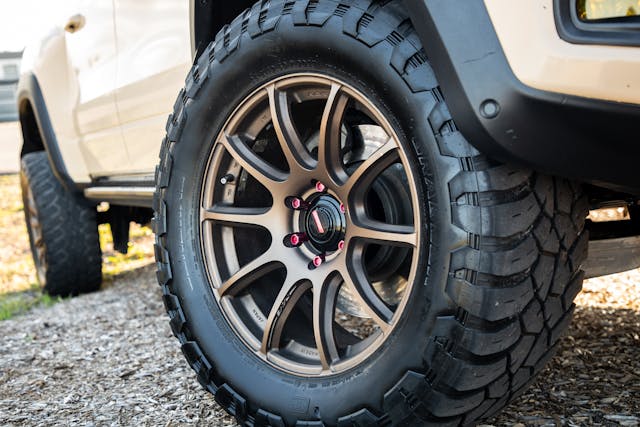
This is a fast truck, but it is also primitive. That’s the draw. The Ram will outsprint a Porsche Cayman GT4 to 60 mph, but corners turn the thing into the best kind of goony cartoon, a ride on the dinosaur lightning. The TRX was built to compete with the Ford F-150 Raptor, and so you get the sense that its happy place is Baja, or a field party, or maybe just bombing over the back 40 at your uncle’s farm upstate.
Every other machine here seems to give at least a nod to maturity. The Ram is that Ford Raptor with more steak in its mouth. And if you think that steak is cooked, think again.
Specs: Ram 1500 TRX
Model years: 2021–present (2021 model shown)
Output: 702 hp, 650 lb-ft
Weight: 6866 lb
0-60 mph: 3.7 sec
MSRP: $81,150 (2023 model year)
***

Dodge Durango SRT Hellcat: The (quiet) loud one
Every cockpit behind a Hellcat engine gives long-travel pedals for gas and brake. Every Hellcat supercharger spits whine audible from two lanes over. Each fender looks stuffed with tire. From the driver’s seat, windows up, the V-8’s lope may sound buried under pillows (Jeep), or a million feet away (Durango), but the note you hear is essentially the same, a basso chain of rifle cracks mixed with speedboats and gurgling.
For all that commonality, the Durango is an outlier. Body frippery is minimal. No other Hellcat engine totes around three rows of seating (standard here) or second-row captain’s chairs (ditto). This is the longest cabin and the darkest interior.
Dimensions dictate much here. At 17 feet long and 6 feet wide, the Durango gives roughly the same footprint as Dodge’s own Charger Hellcat sedan but another foot of height. With a curb weight in excess of 5500 pounds, the Durango-cat is more than 1300 pounds lighter than the Ram TRX but still nearly 300 pounds heavier than the Jeep Trackhawk.
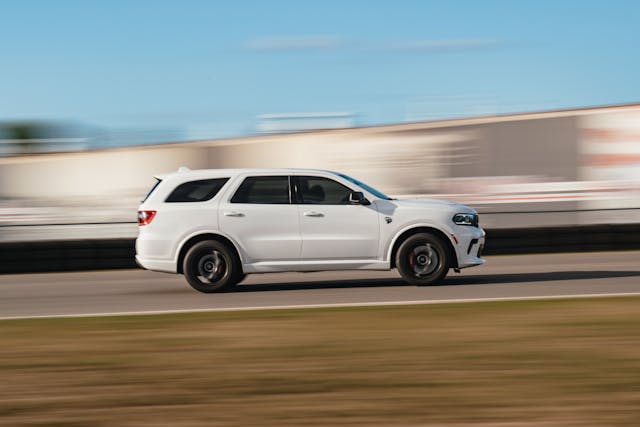
Our photo truck, a white ’21, wore a vibe best described as Stormtrooper School Bus: evil, if mass-produced and kid-friendly. And unlikely to stand out in a crowd.
This truck feels like a secret. It is not the fastest or the quickest or the looniest in the family—not the Hellcattiest, in other words—nor the most fun in a corner. But it is the most practical. The greatest sleeper. This is what you use to take your four kids out for some takeout chili dogs, and then, at a stoplight on the way home, you do a brake-torque launch and chili gets on everyone’s face while some goof in a Viper wonders why he just got dusted by some cackling goof in a big Dodge brick.
Other carmakers offer models that play in the Durango-cat’s sandbox. None so nail the subtlety. More important, none of them have Mopar big-blocks that go wheep! when the blower wakes up.
Specs: Dodge Durango SRT Hellcat
Model years: 2021–2023 (2021 model shown)
Output: 710 hp, 640 lb-ft
Weight: 5534 lb
0-60 mph: 3.6 sec
MSRP: $92,780 (2023 model year)
***
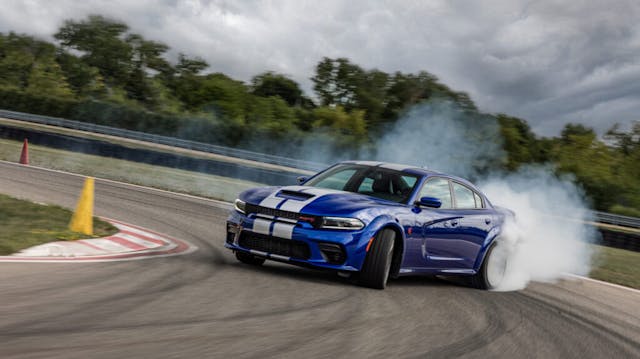
Dodge Charger SRT Hellcat: The people’s champ
Mechanically speaking, the Hell-Charger is basically a longer Hell-Challenger with two more doors. Both can carry four people, but the Charger’s back seat is far more roomy and easier to access. This makes sense—for most of America, the base Charger is a family shuttle, a police cruiser, a taxi. It was born to that life.
Injected with Hellcat DNA, that sedate and reasonable machine can go tire-melting drift sofa on demand. This is American hot-rodding writ large: a tame family rear-driver gifted enough power to jumpstart a small sun.
How does a four-door sedan seem more unhinged to drive than a two-door retro coupe, a dune-jumping pickup, or a Jeep that cons you into thinking it’s pulling a wheelstand every five minutes? It just does. No one will ever mistake a Charger for a sports car. It is balanced and forgiving in a corner, yes, but it’s also the size of an aircraft carrier.
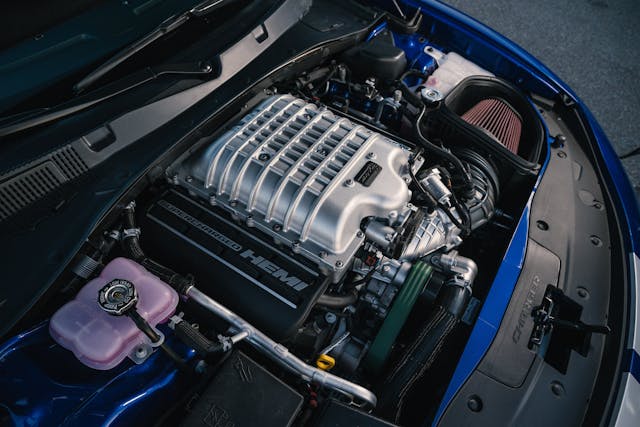
What if, though, you could throw the USS Nimitz sideways through an intersection? No sedan has ever made it easier for a person to be so happily stupid. If drifts are simple in the Challenger, they are brainless in the Charger. The latter’s longer wheelbase helps the car feel more forgiving when sideways, and less pitch-sensitive; the Charger is also slightly more stable at speed. The eight-speed ZF automatic, available in every other Hellcat platform, is responsive and quick-shifting.
Back roads are like using a bazooka to rid your yard of squirrels: Brief moments of inattention might obliterate bits of scenery, but when you’re having this much fun, who cares?
Taste is subjective, but this is your author’s favorite Hellcat. Mostly because it feels as if it had been built in a backyard by a bunch of 19-year-olds who did donuts on the dean’s lawn until that individual came outside and shook a fist in the air, yelling, “DAMN YOU, HELLCAT HOUSE!”
Specs: Dodge Charger SRT Hellcat
Model years: 2017–2023 (2022 model shown)
Output: 807 hp, 707 lb-ft
Weight: 4654 lb
0-60 mph: 3.5 sec
MSRP: $90,635 (2022 Jailbreak Edition)
***

Dodge Challenger SRT Hellcat: The first, the legend, the O.G. thriller from saltiller
The base Challenger was launched in 2008. The Challenger Hellcat appeared seven years later. In the time since, the latter has birthed a laundry list of variants: Demon, Super Stock, Jailbreak, Widebody, Redeye, Redeye Widebody.
Those cars gave as few as 707 horsepower and as much as 840. Some were purpose-built for drag racing, while others were simply quicker and faster and more interested in corners. Our 2015 photo car is the narrow-body original, the shape the engine met first.
Details count. Some engines demand a manual. This one is so flexible, so grunt-all-the-time, that an H-pattern is just icing on the cake. The Charger hits 60 mph a few tenths quicker, but the Challenger will do that sprint without leaving first gear. The Tremec’s synchros feel unbreakable. The windows are short, behind that long prow of a hood, above those long and heavy doors—to buckle in is to strap yourself into a bunker.

Fitting, for a car that feels like a tool of war. At 40 mph, at 100, above a buck-fifty, like any other Hellcat carrier, the Challenger is always pulling. The grunt simply tidal-waves in, stomping and seamless, regardless of rpm or gear or heat soak. That wallop in the pants is the 6.2’s calling card, but here, it hits different.
Something about the Challenger’s shape makes speed and violence feel like more of a commitment. The gearbox just ups the volume. More than a few EVs and supercars give more power and violence. Nothing else presents as such a statement about the importance of breathing deep. Both literally—how a good and raw fast car can make your lungs feel larger—and figuratively, as the supercharger shoves air down the engine’s throat.
Most Hellcat owners won’t get a chance to observe this phenomenon legally—at least, not in America. You know what matters more, though? The fact that they can.
Specs: Dodge Challenger SRT Hellcat
Model years: 2015–2023 (2015 model shown)
Output: 707 hp, 650 lb-ft
Weight: 4488 lb
0-60 mph: 3.6 sec
MSRP: $69,340 (2023 model year)
***
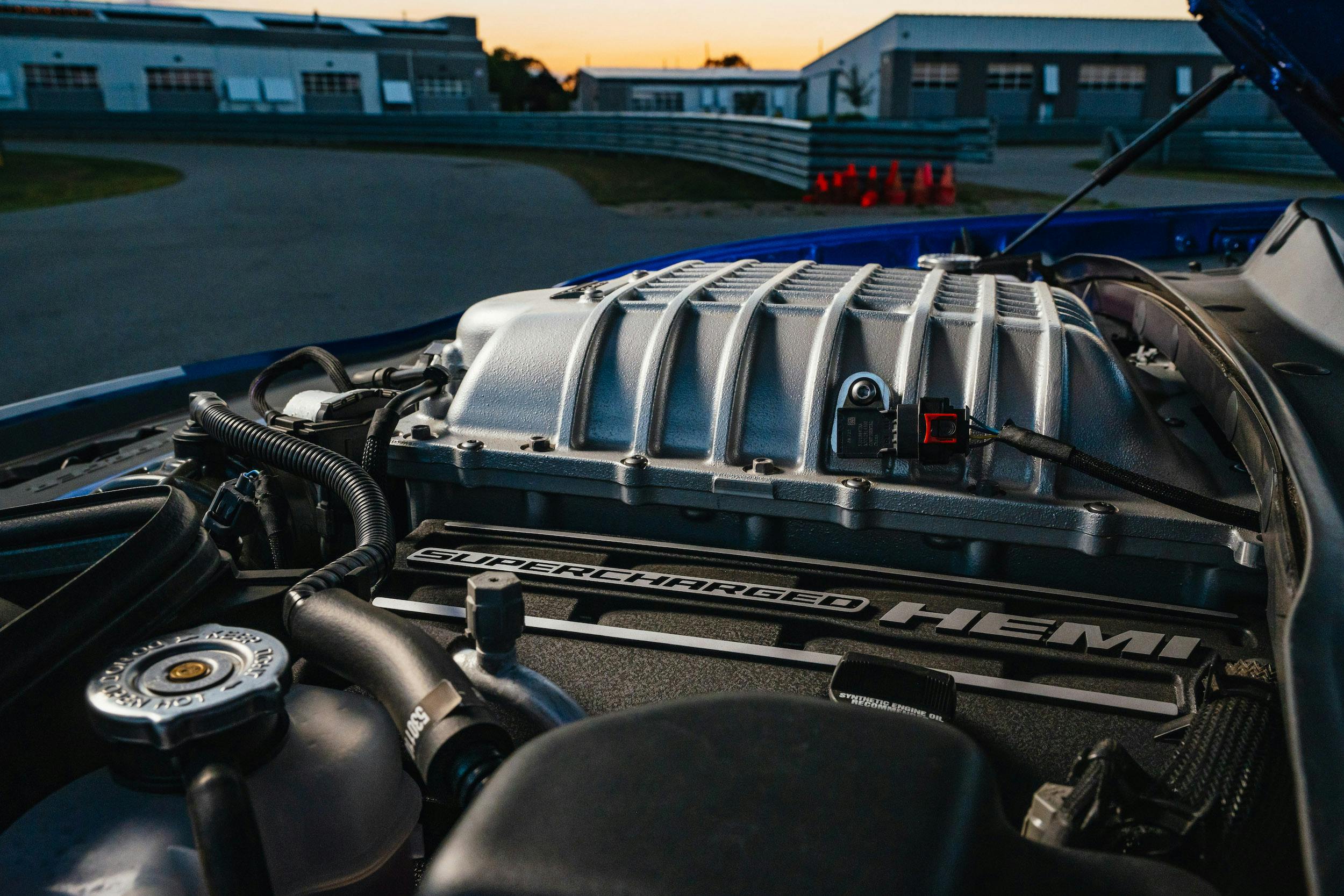
And now, a fond farewell
On a clear summer morning in 2015, on a deserted stretch of Michigan pavement, while working for a car magazine, I tested my first Challenger Hellcat. I performed a few unprintable acts between lane lines. Then I pulled onto the shoulder, amazed, to think.
They made this much power, I thought, with a warranty? The engine made it through all those factory extreme-weather abuse tests, over the mileage-durability R&D hurdles, and can now simply be handed to normies who don’t know anything about cars, no special instructions or strings attached? For Corvette money, you get another 200 horses, a back seat, and a legit 200-mph car?
A 700-hp brick that serves up 22 mpg?
Seriously?
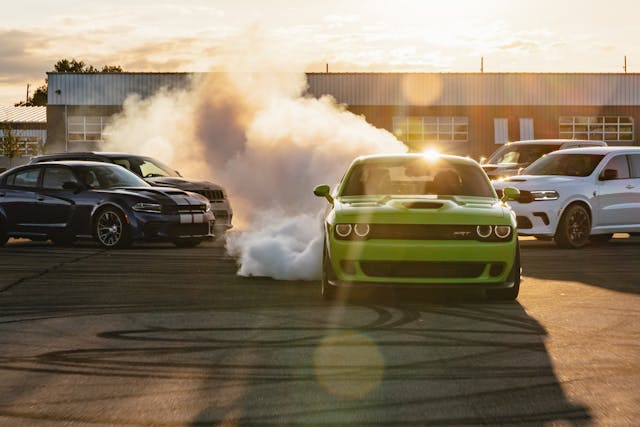
That 6.2 needs no special treatment to churn out its best. It gives its all, in SUV or sedan or retro coupe or pickup, without special fuel or maintenance intervals measured in eye-blinks. Its presence in showrooms seemed hung on the idea that talented people were forced to get creative because they cared, because they saw a moment to do something deeply cool and knew that moment wouldn’t last. No engine of the past 25 years—and I have tried almost all of them—has seemed as egalitarian or as friendly.
Which is all weird business to say about a cold and unfeeling machine, but then, the Hellcat has always been so much more than a V-8. It was that nervy speedboat idle, all that potential, one last swing for the fences, served up in the long and gauzy dusk of internal combustion. A sense of waiting for somebody.
How lucky we were, when all is said and done, to have had a chance to show up.

***
Check out the Hagerty Media homepage so you don’t miss a single story, or better yet, bookmark it. To get our best stories delivered right to your inbox, subscribe to our newsletters.

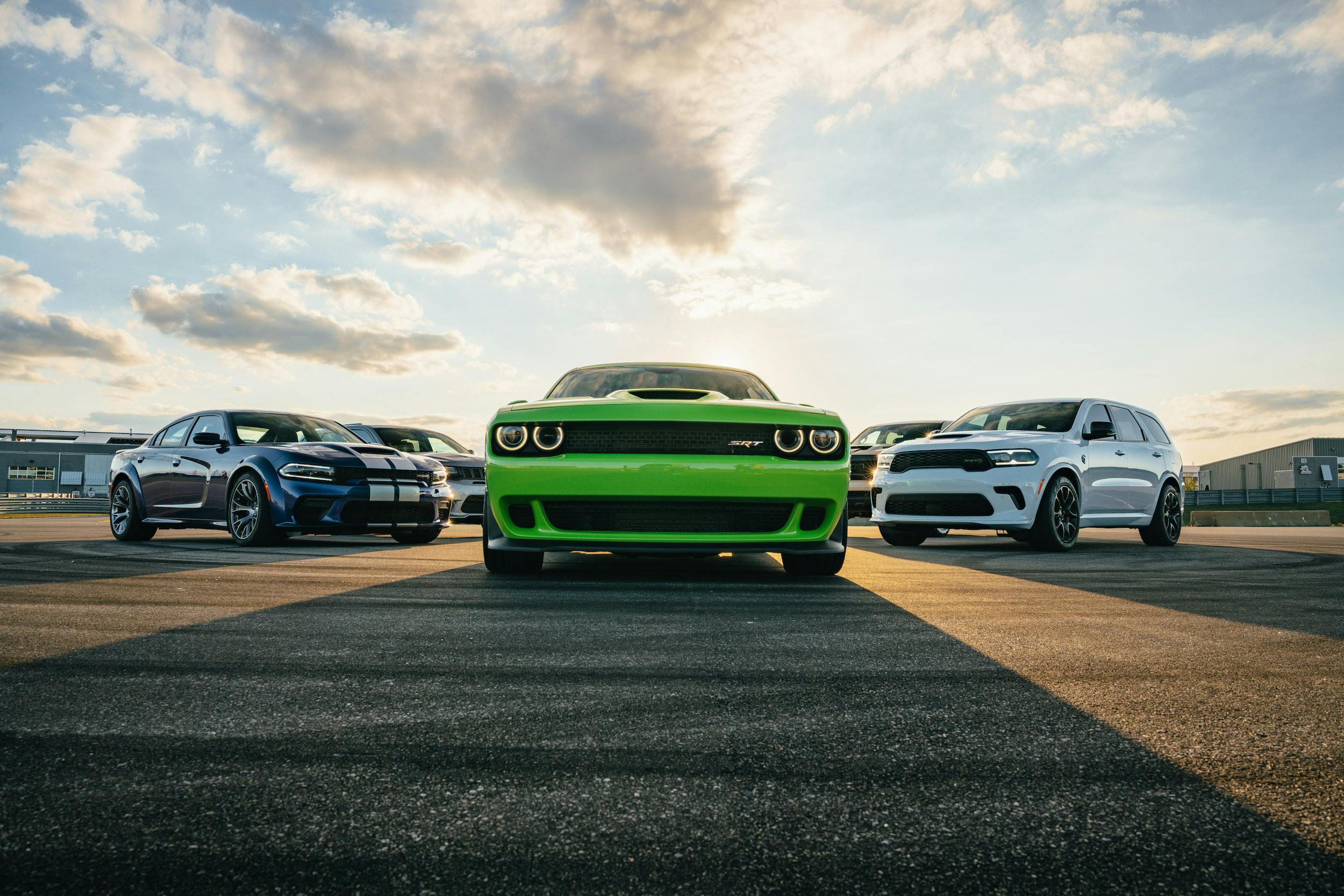
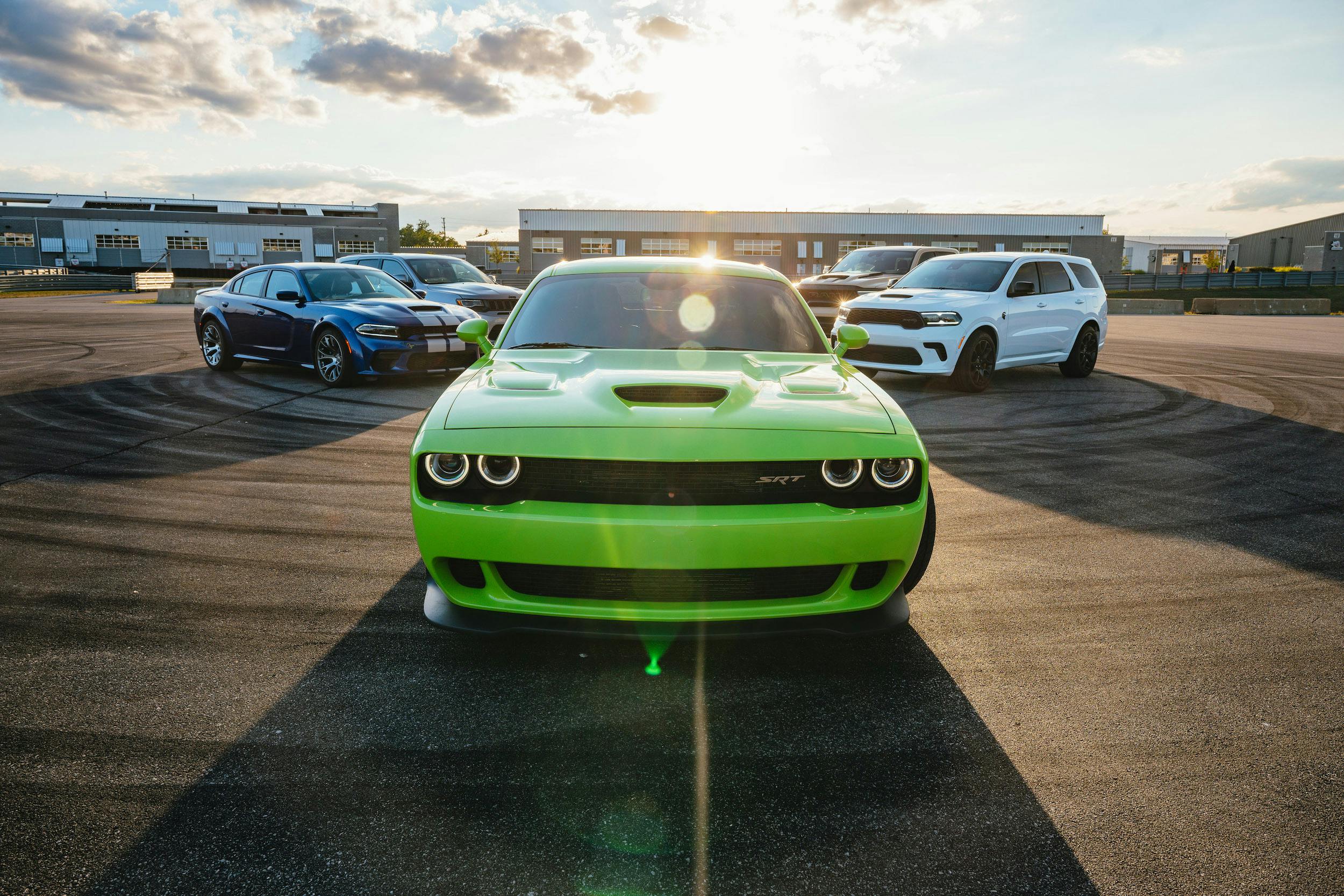


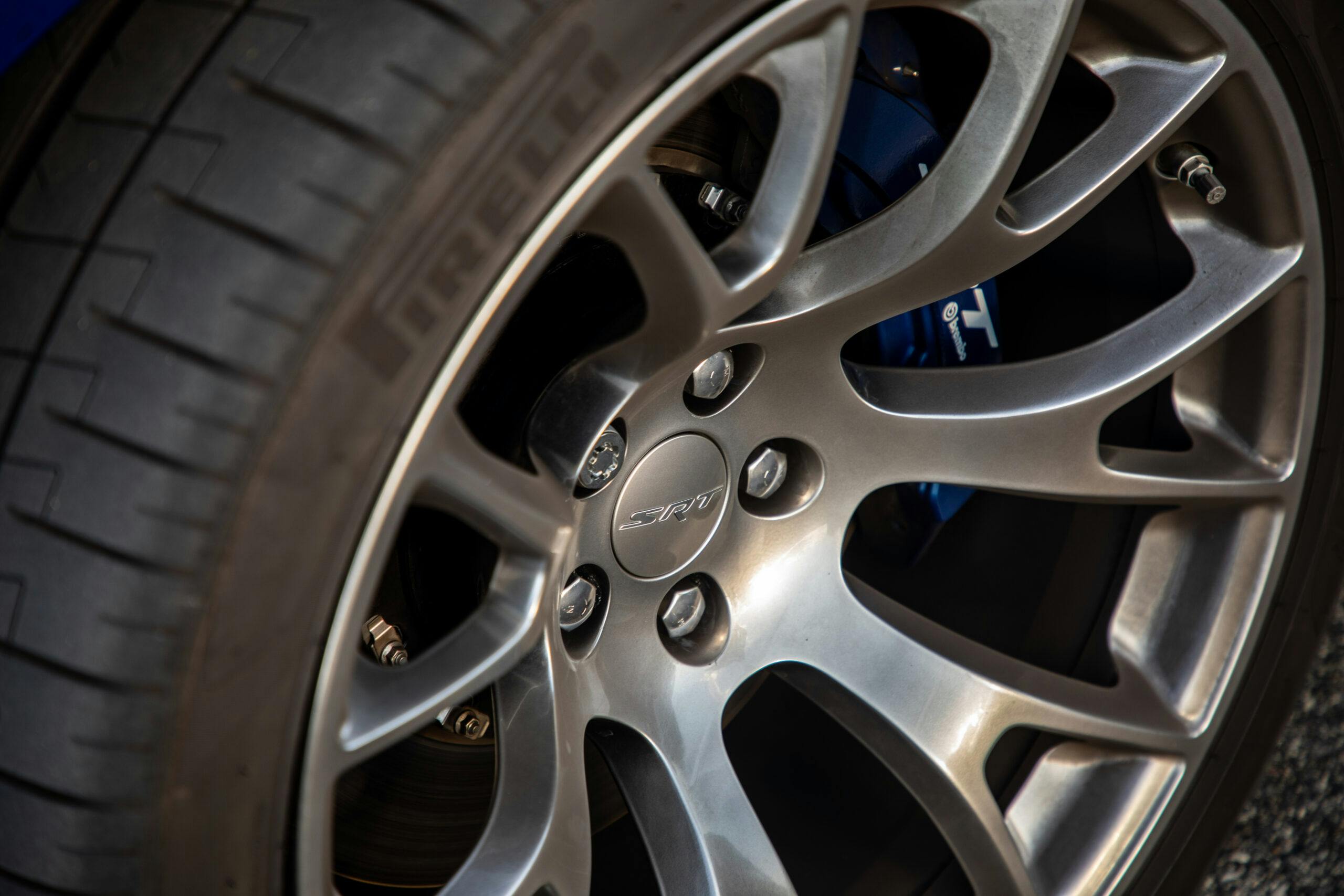
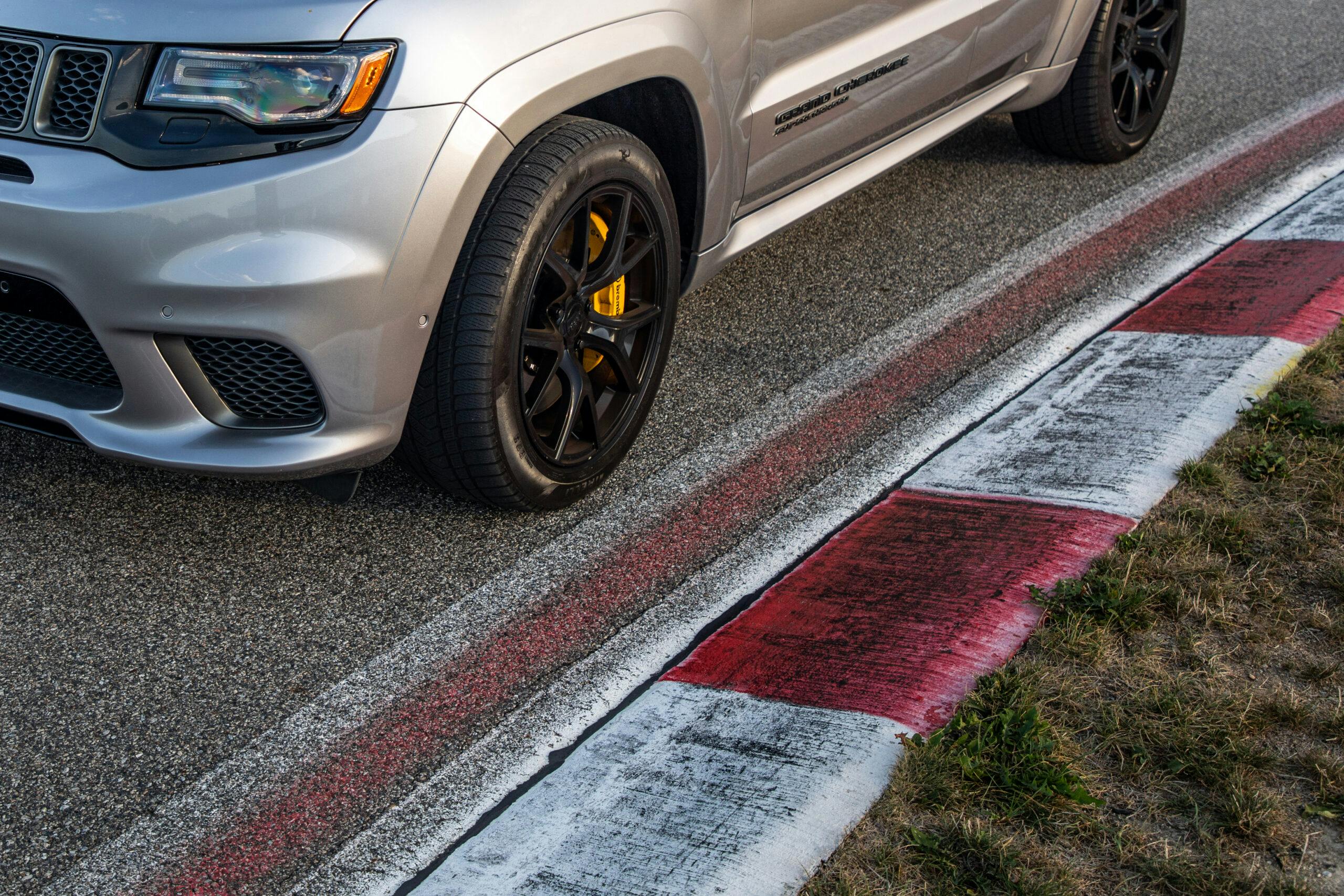
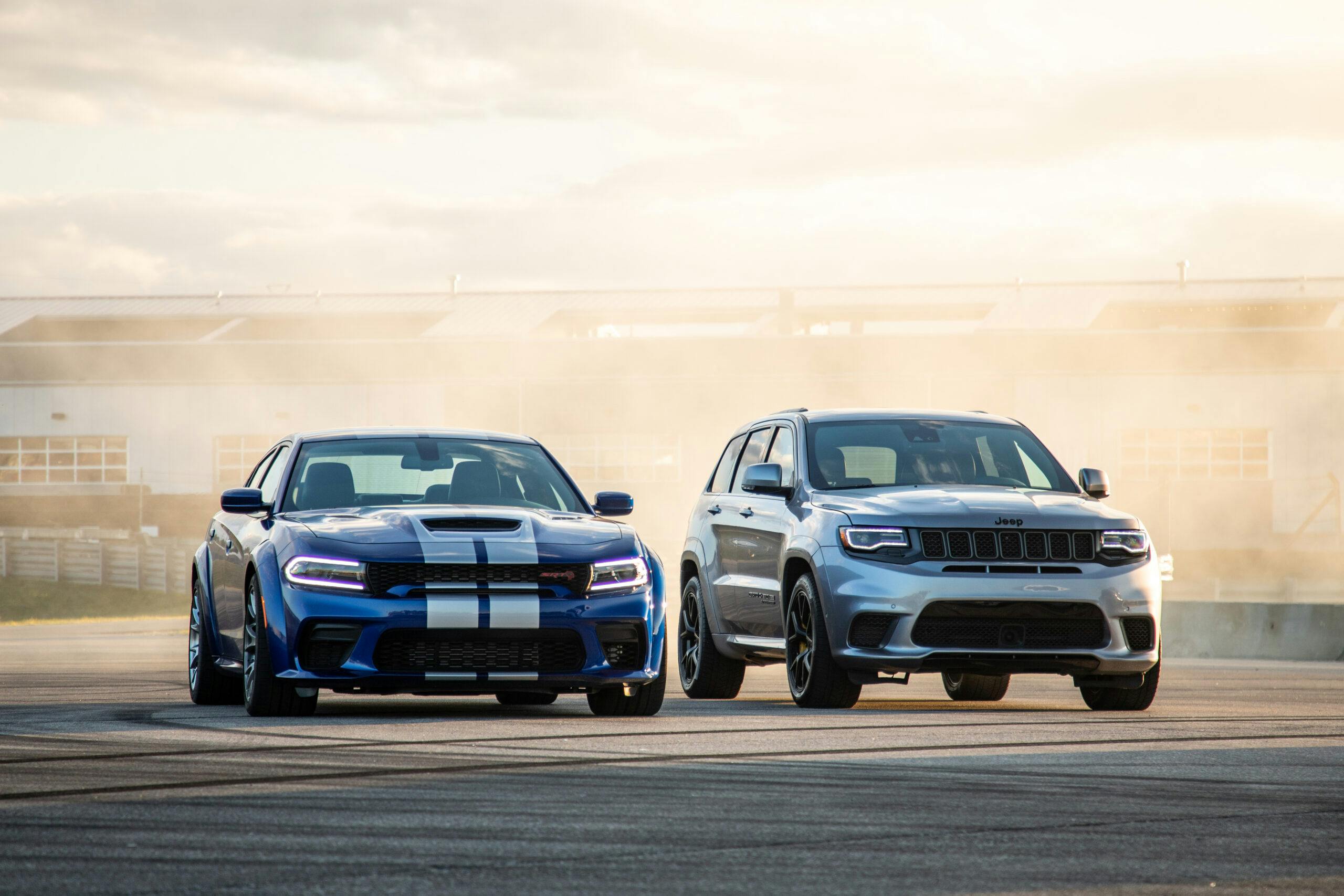
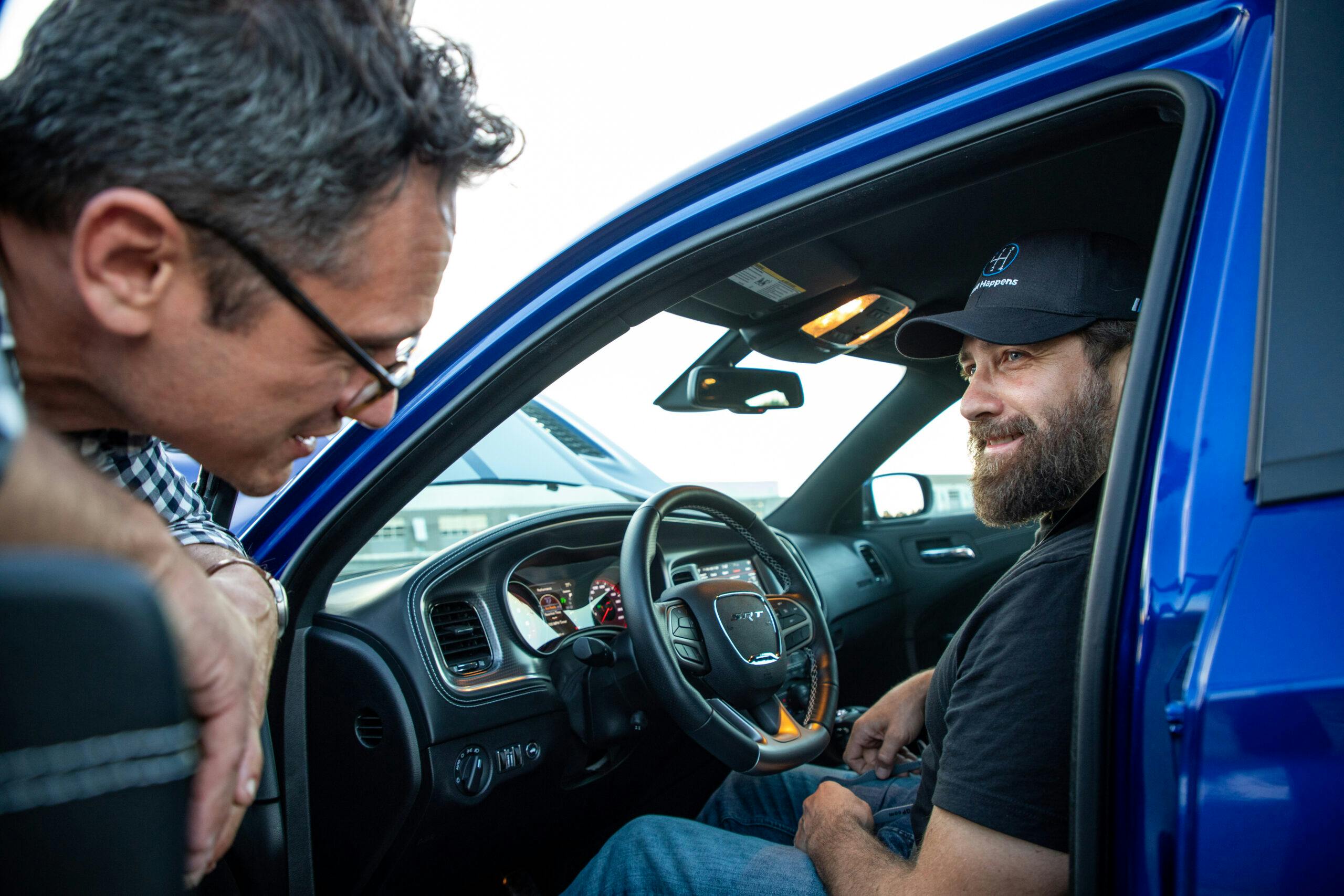
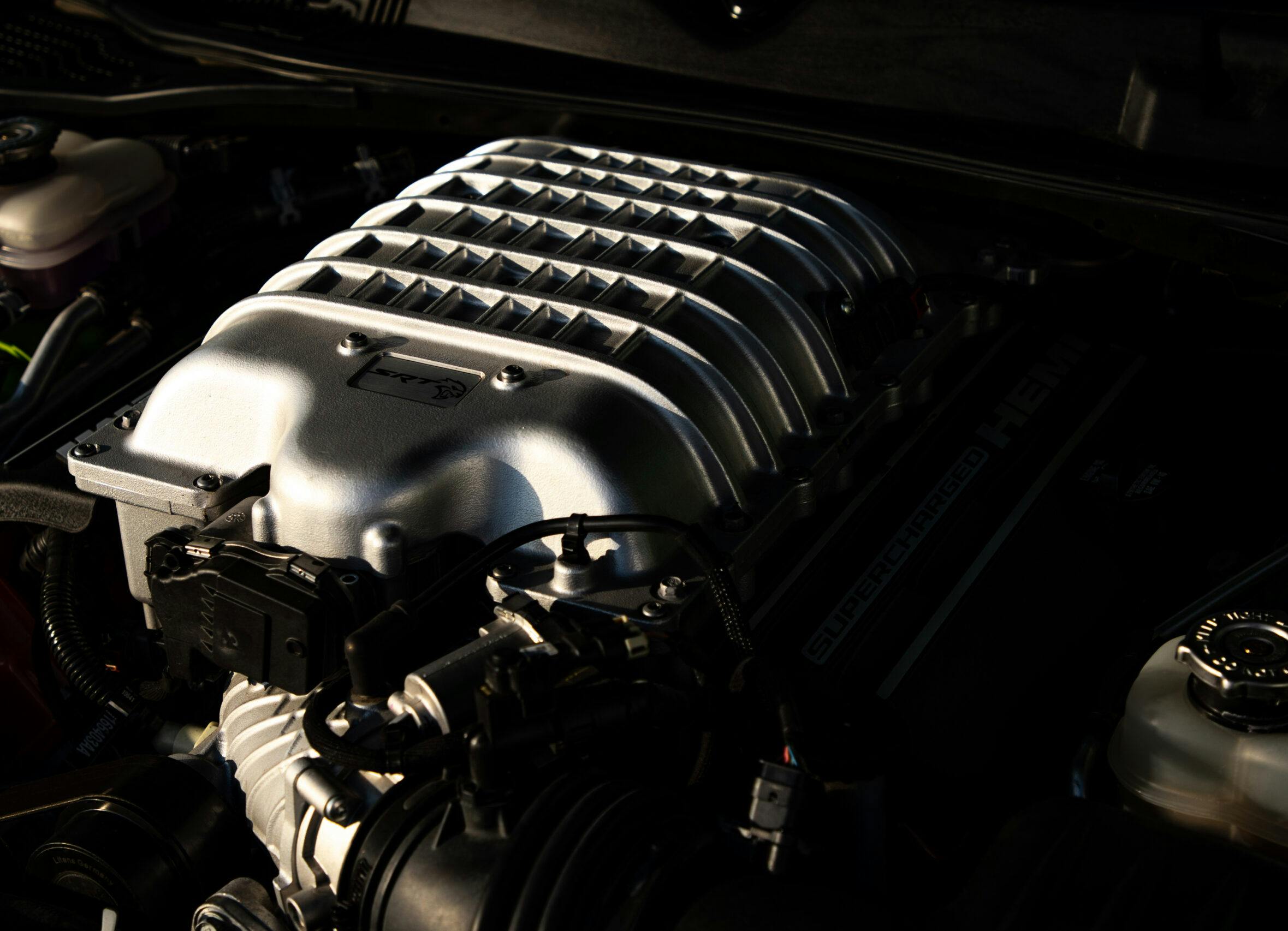
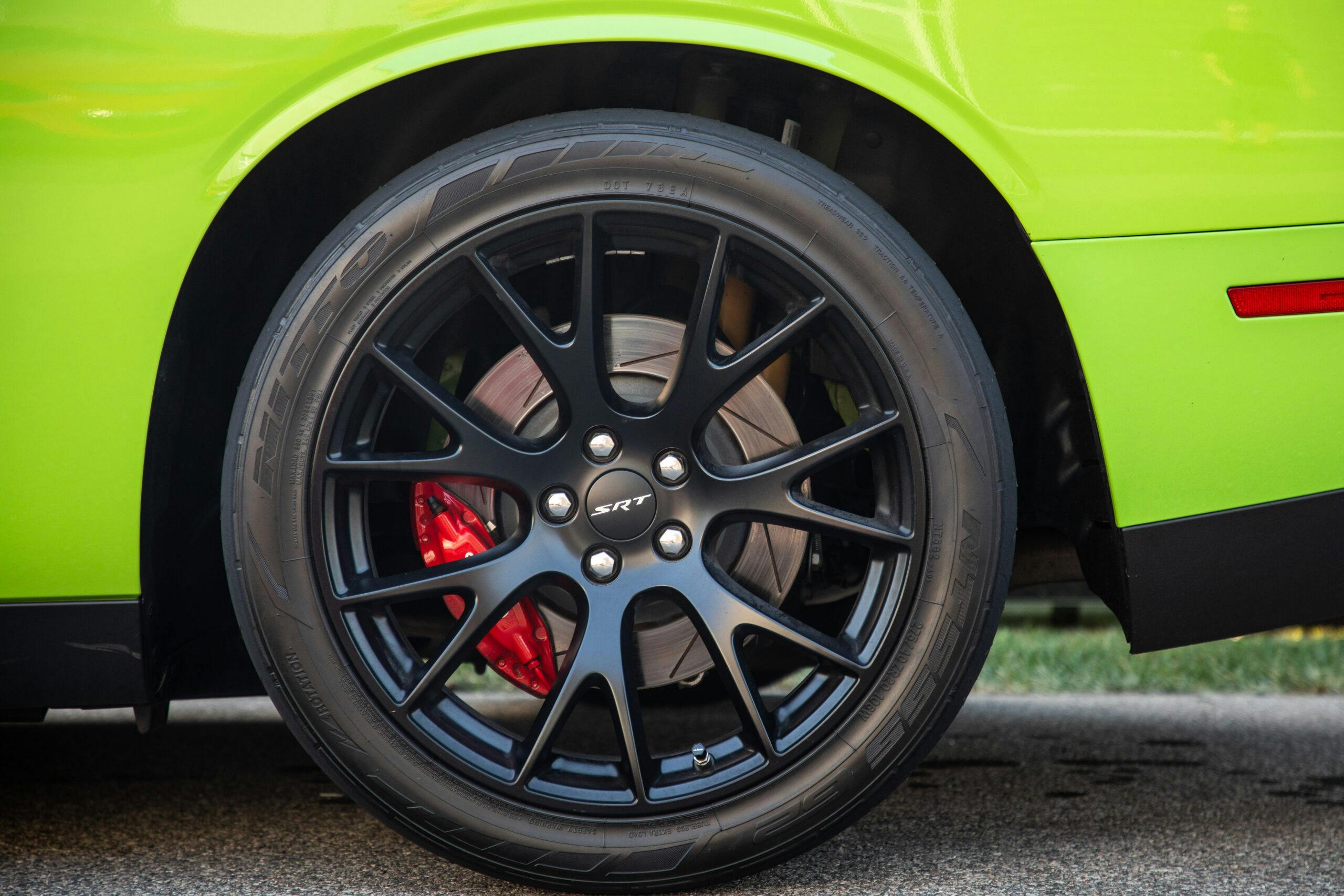
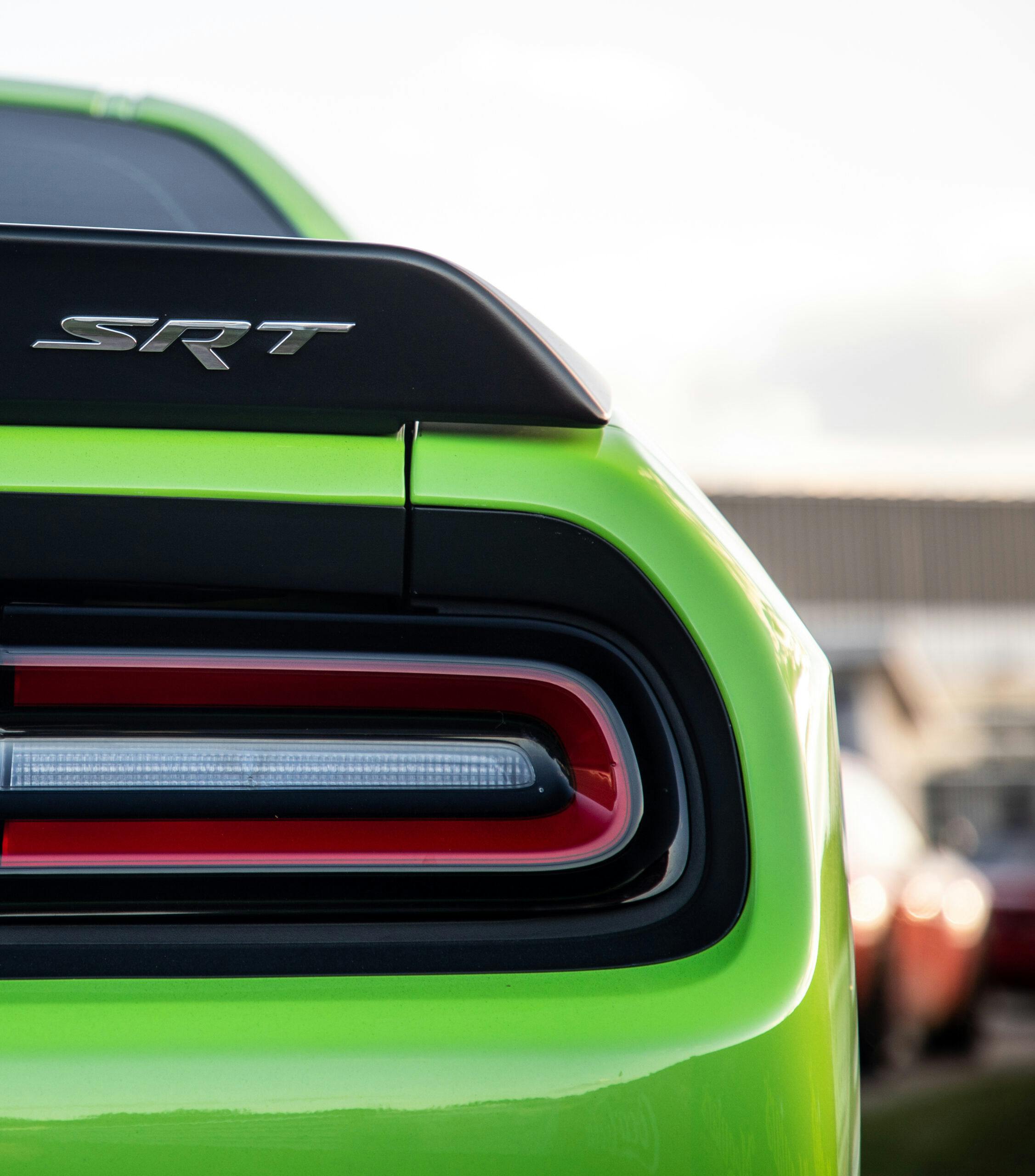
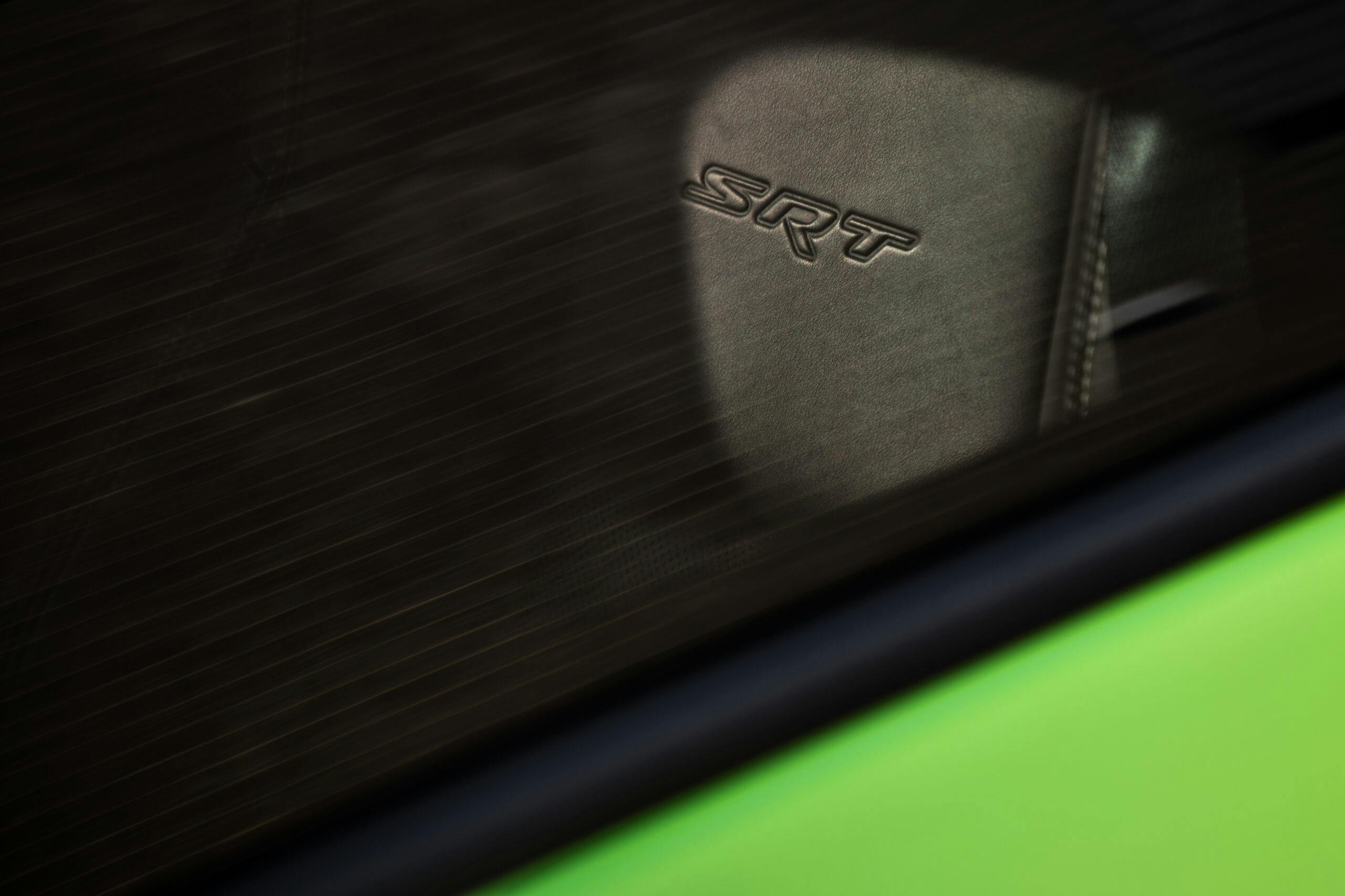
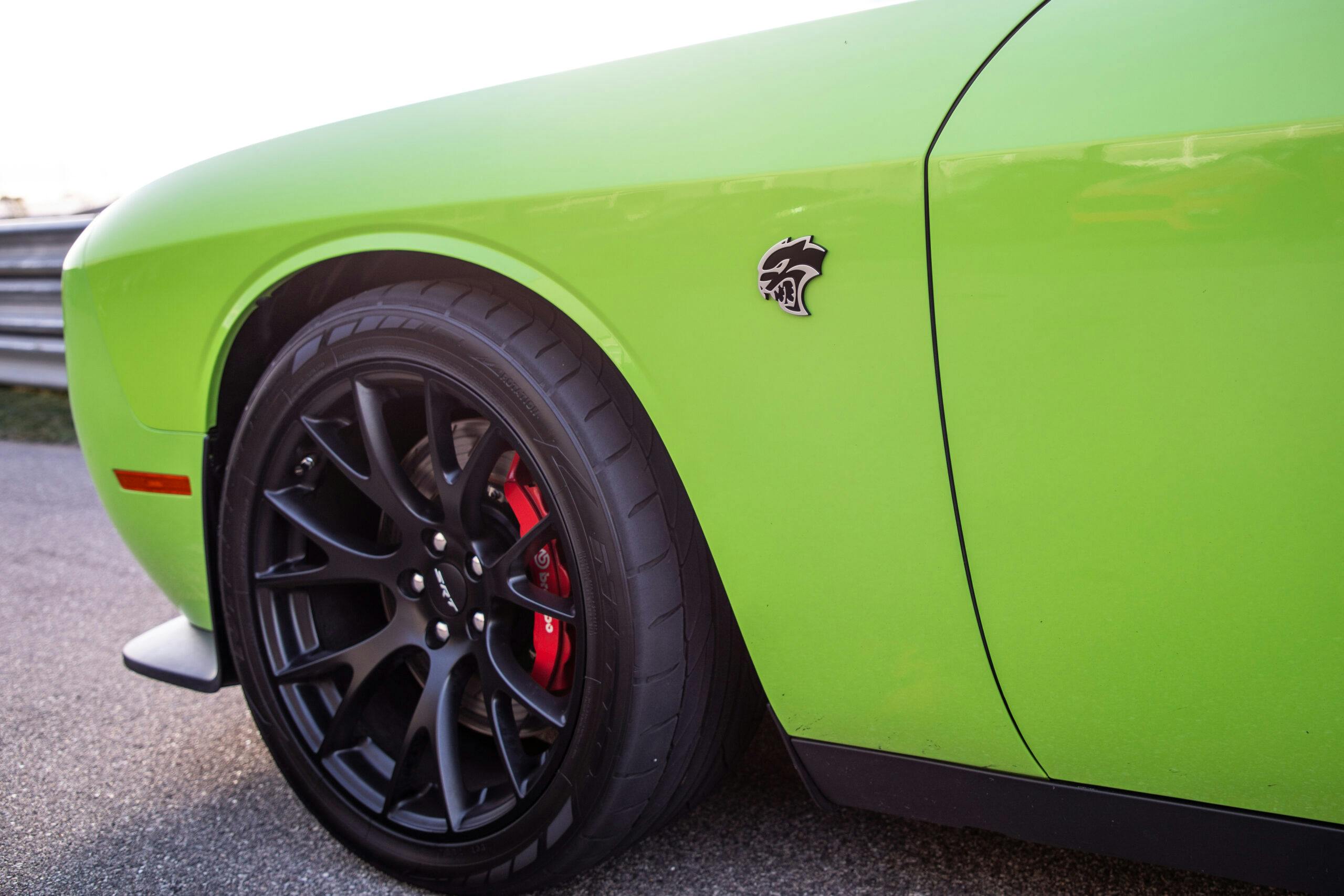

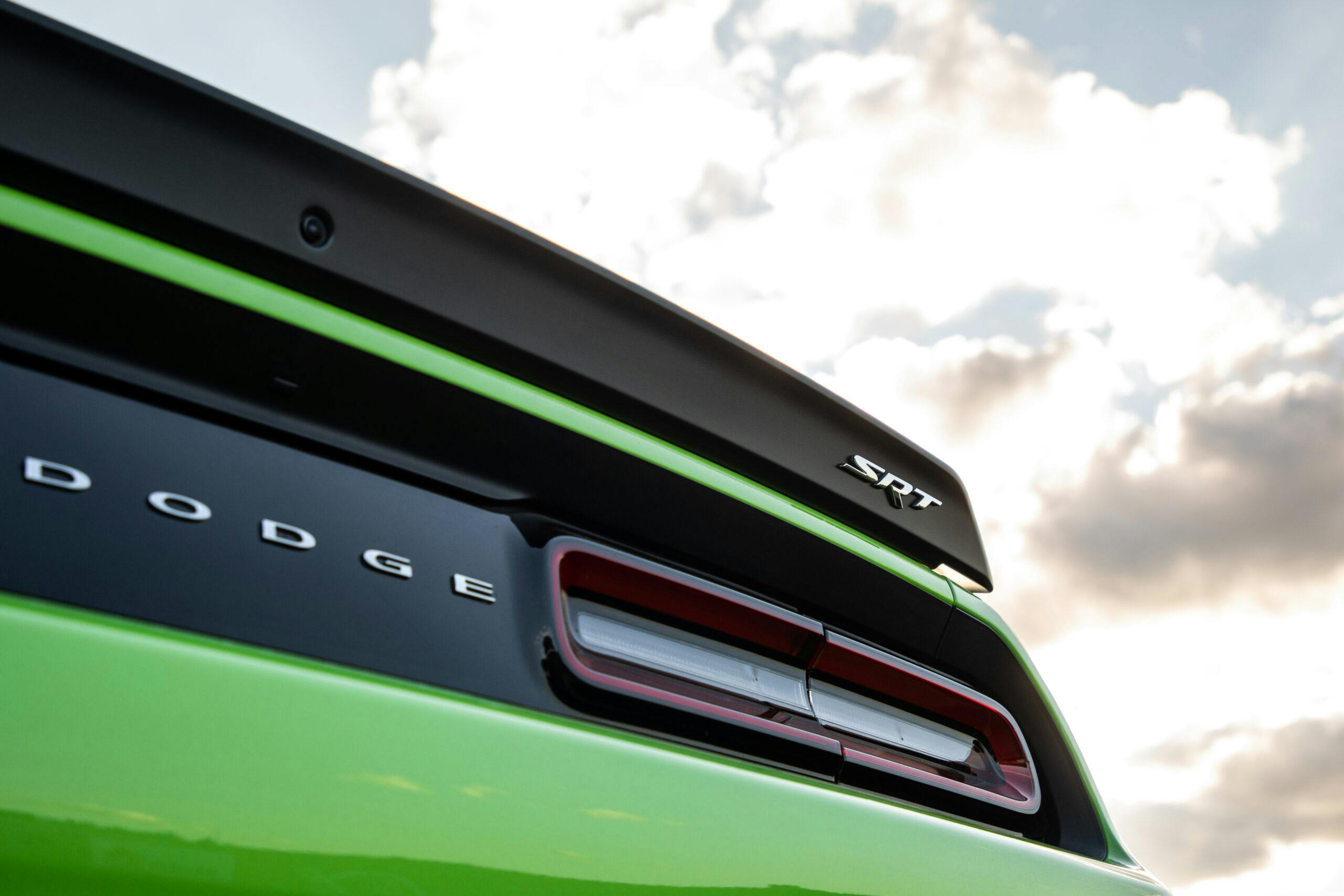
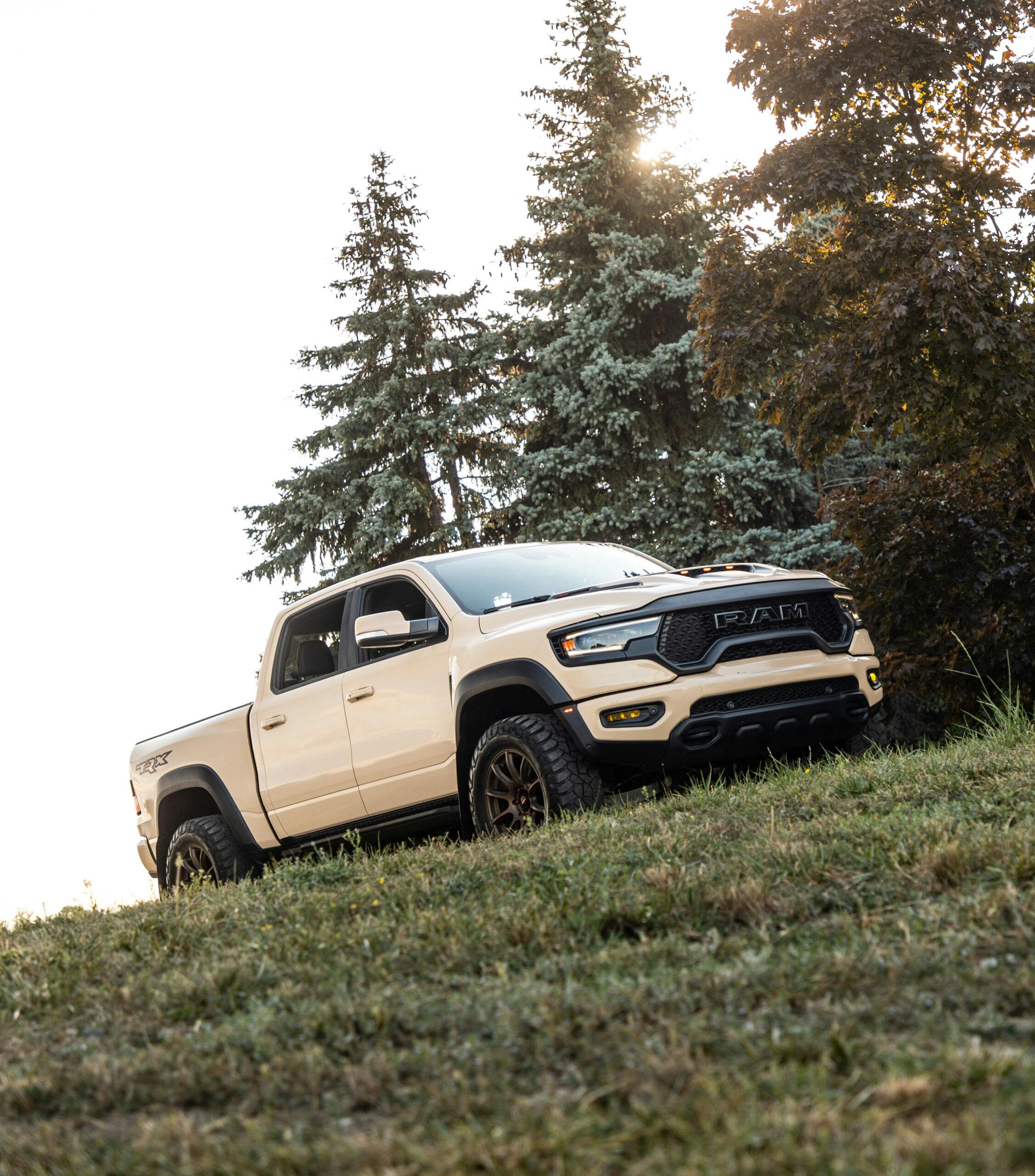
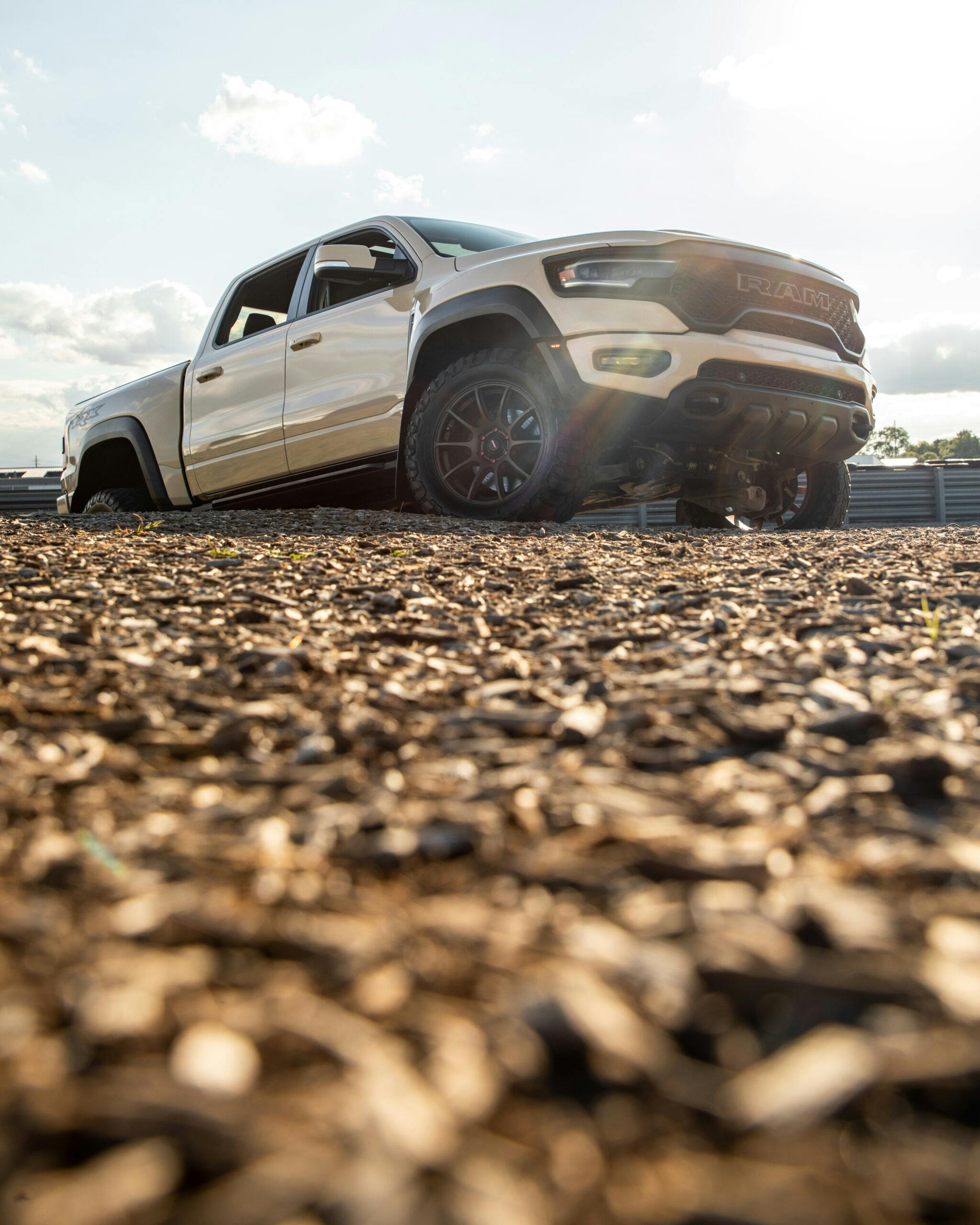
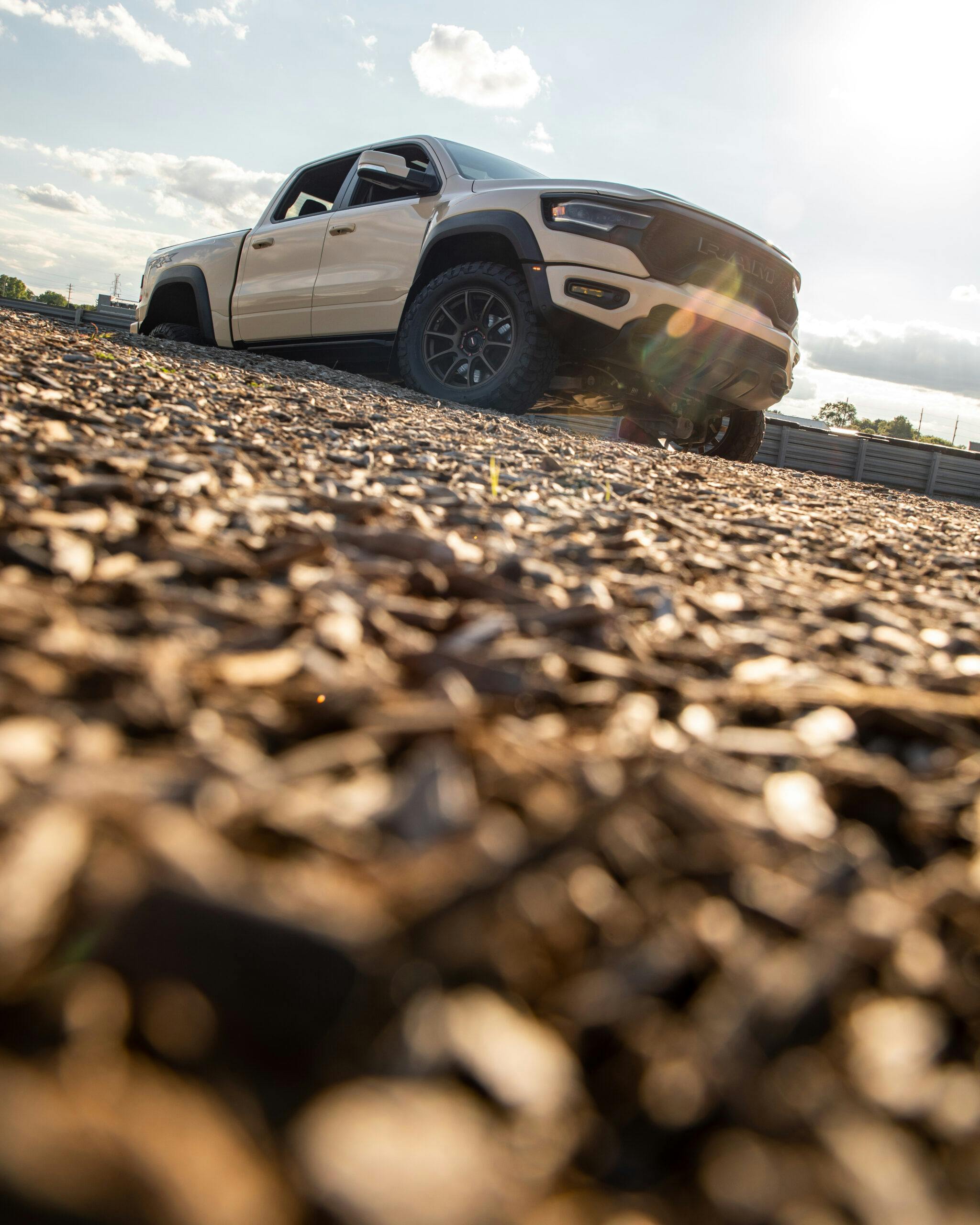

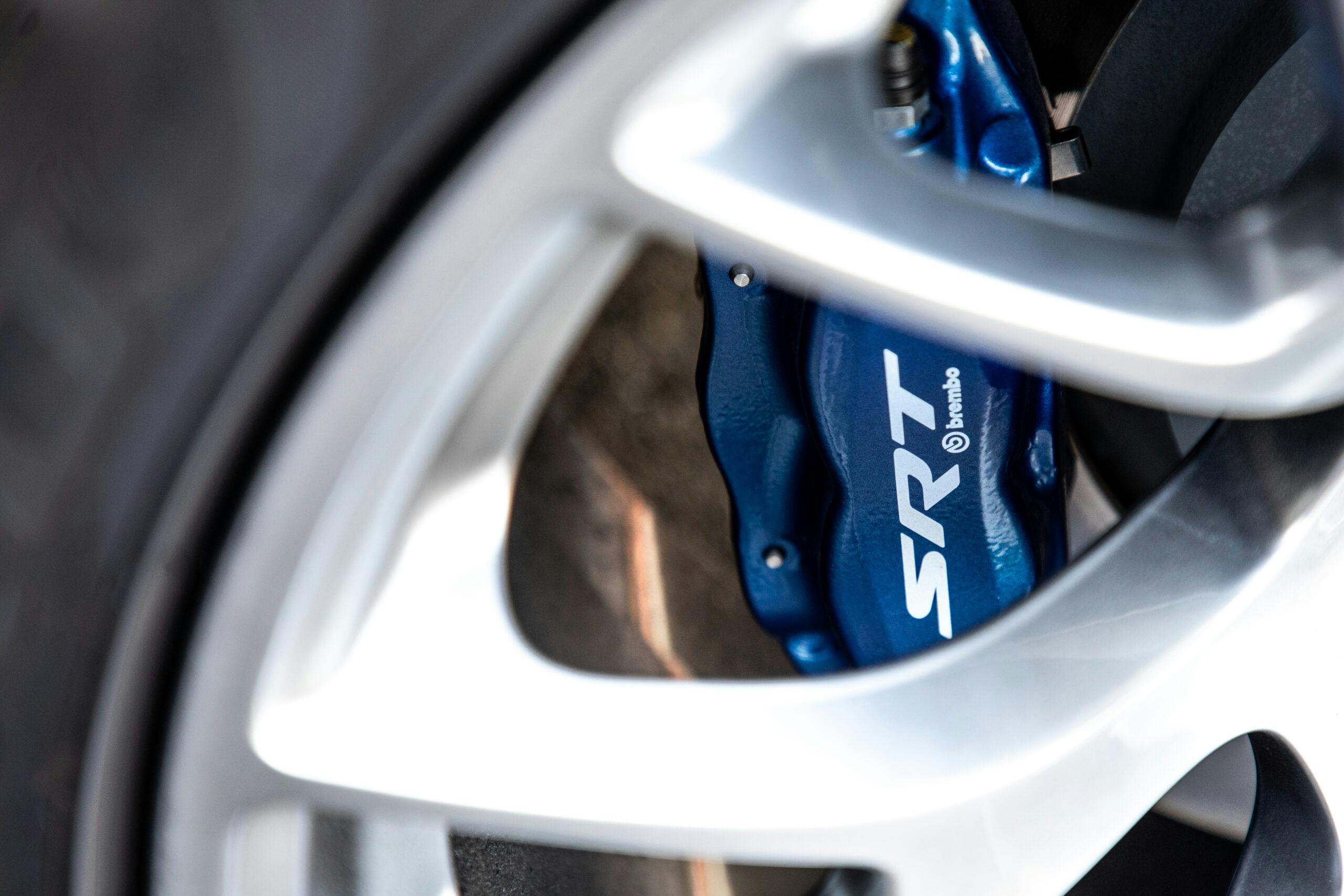
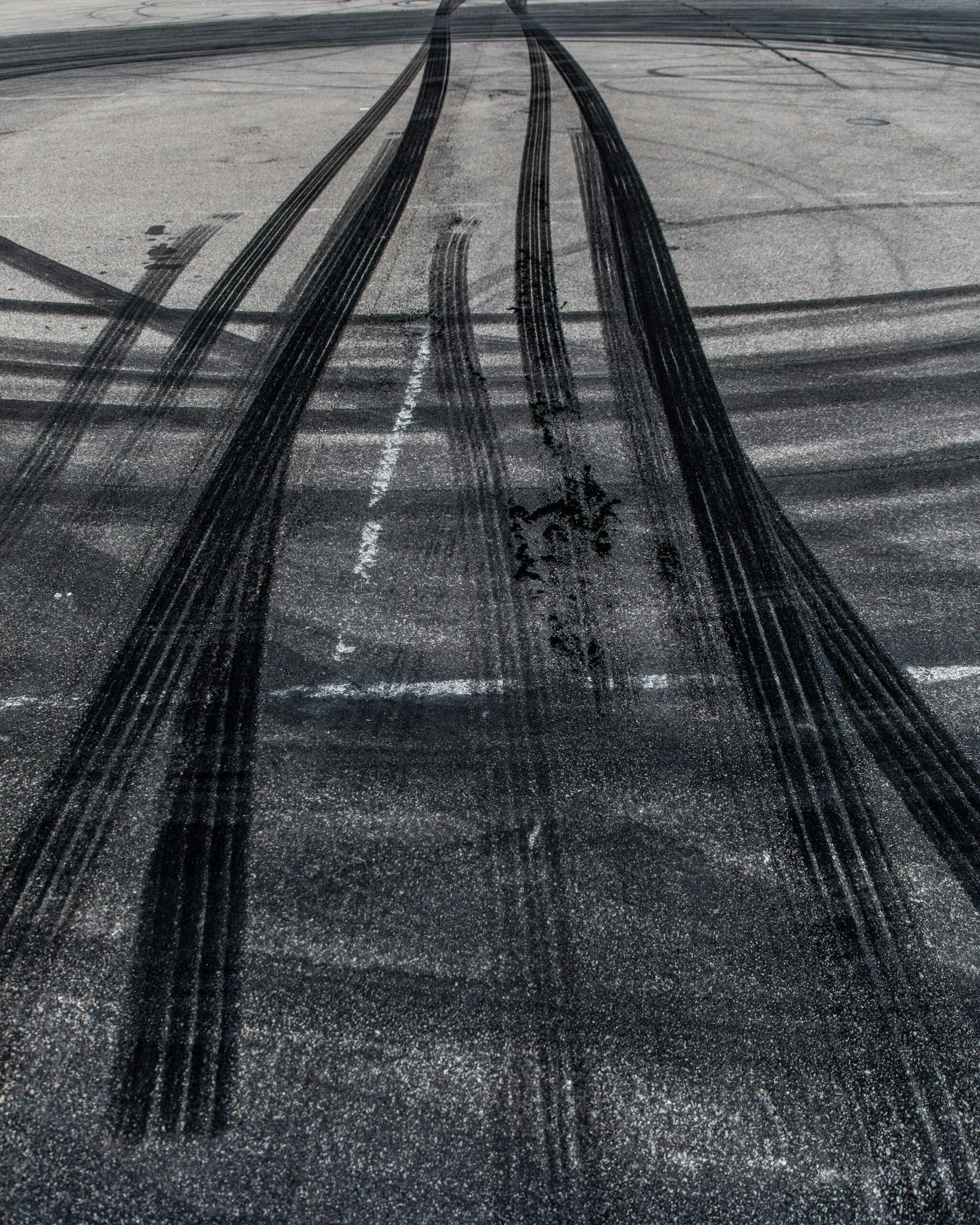
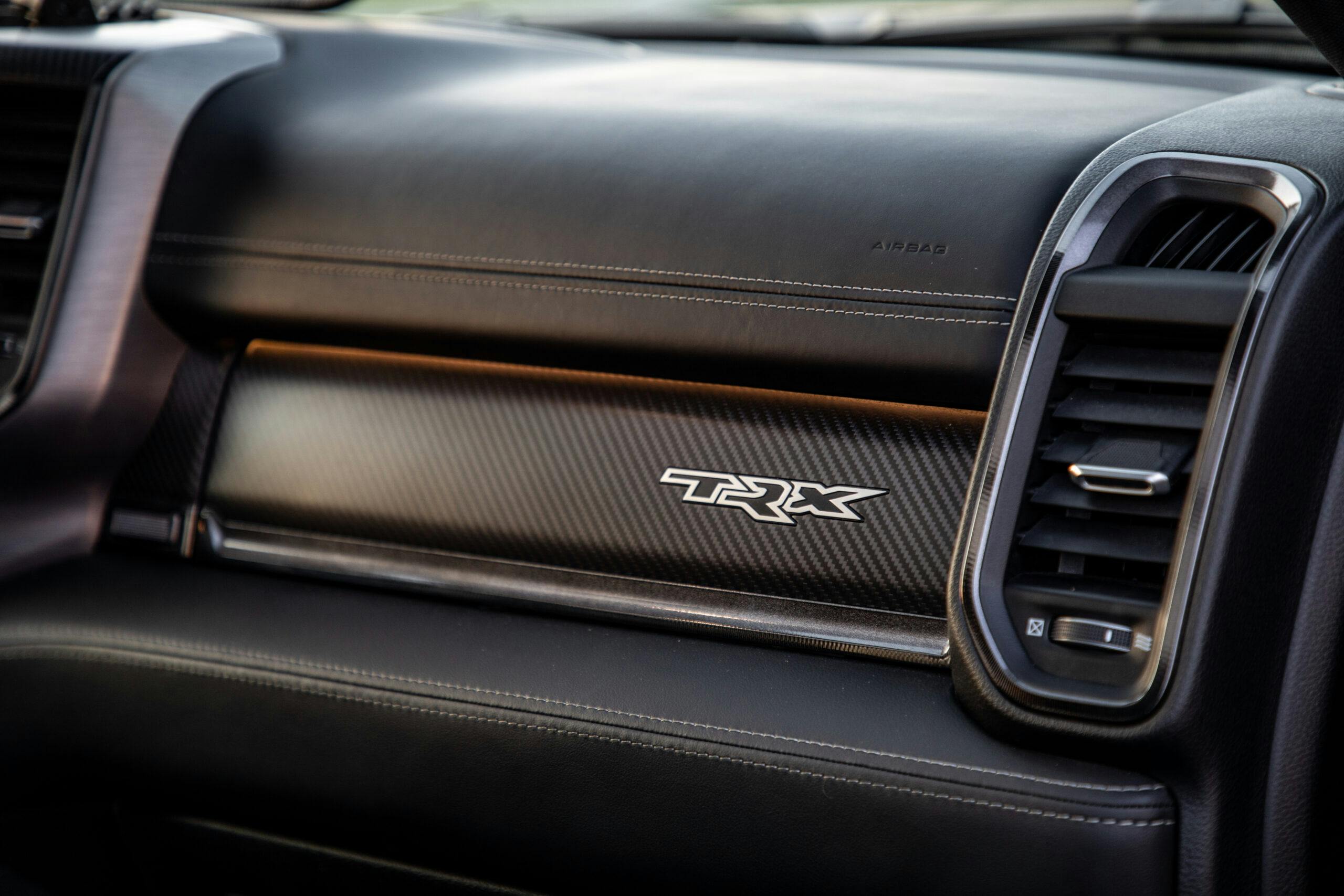
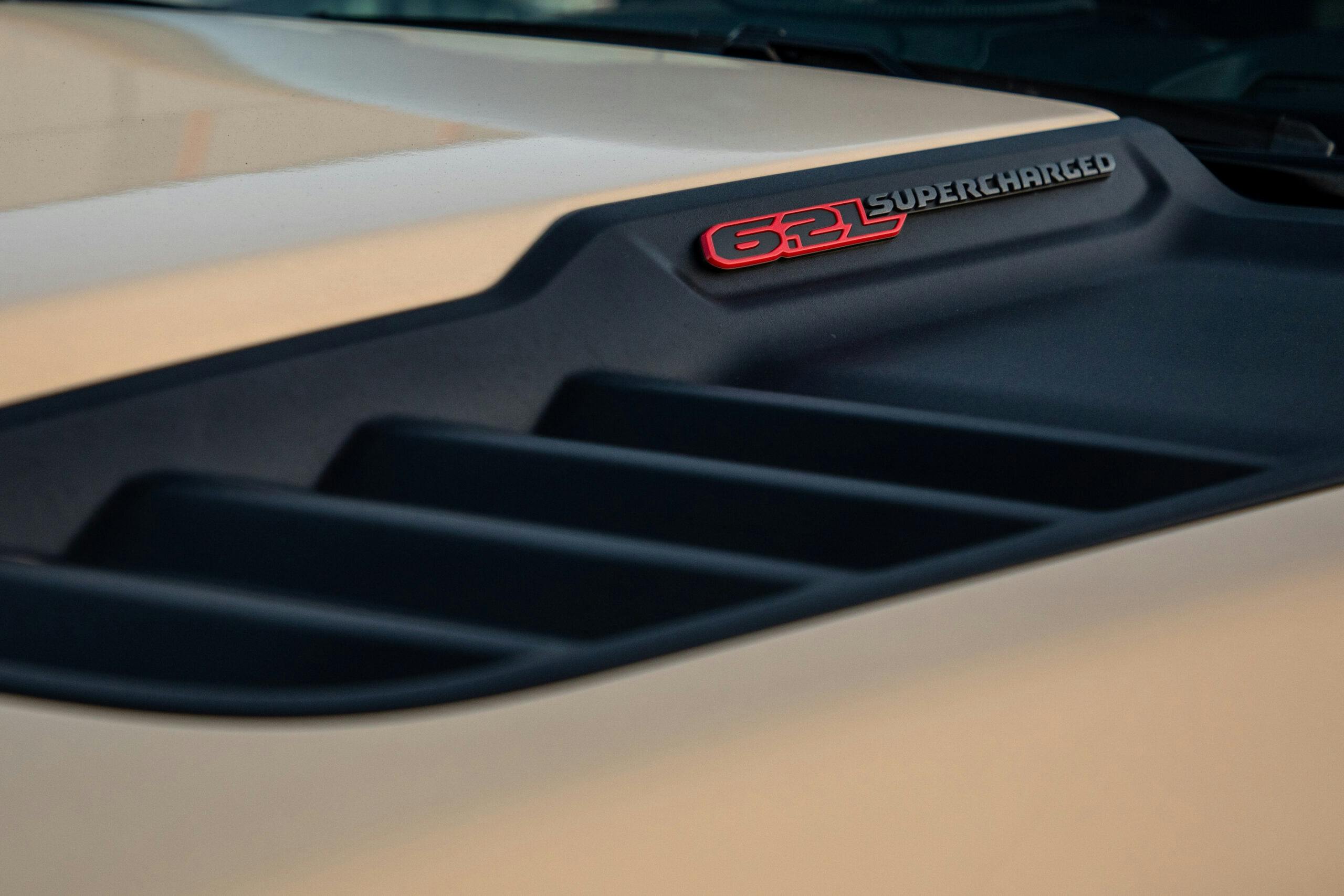
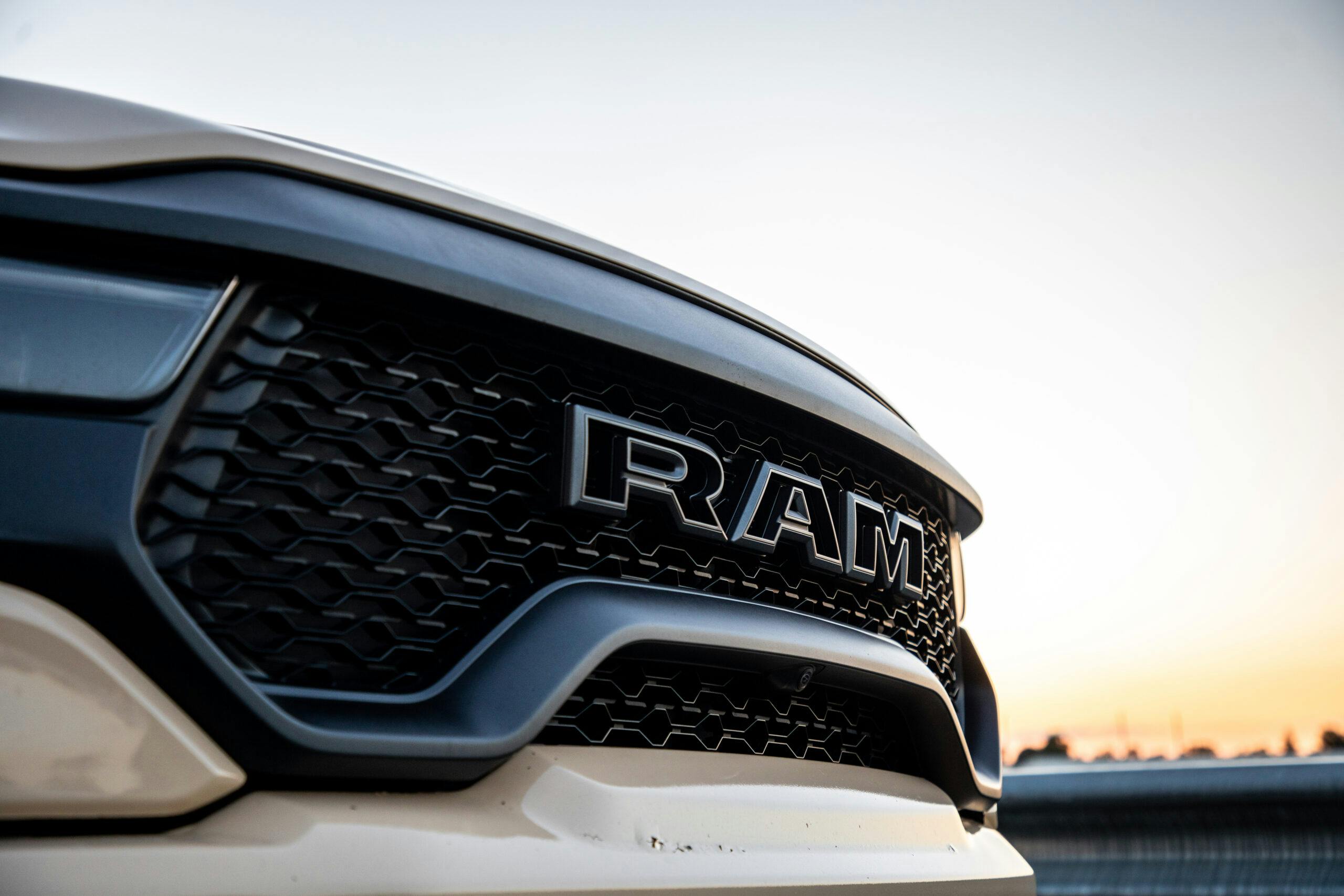


Quite enjoyed your colorful descriptions! I love American muscle and prefer bowties, but glad to have seen the big V8 push the last near decade. Salute Dodge, y’all did that!